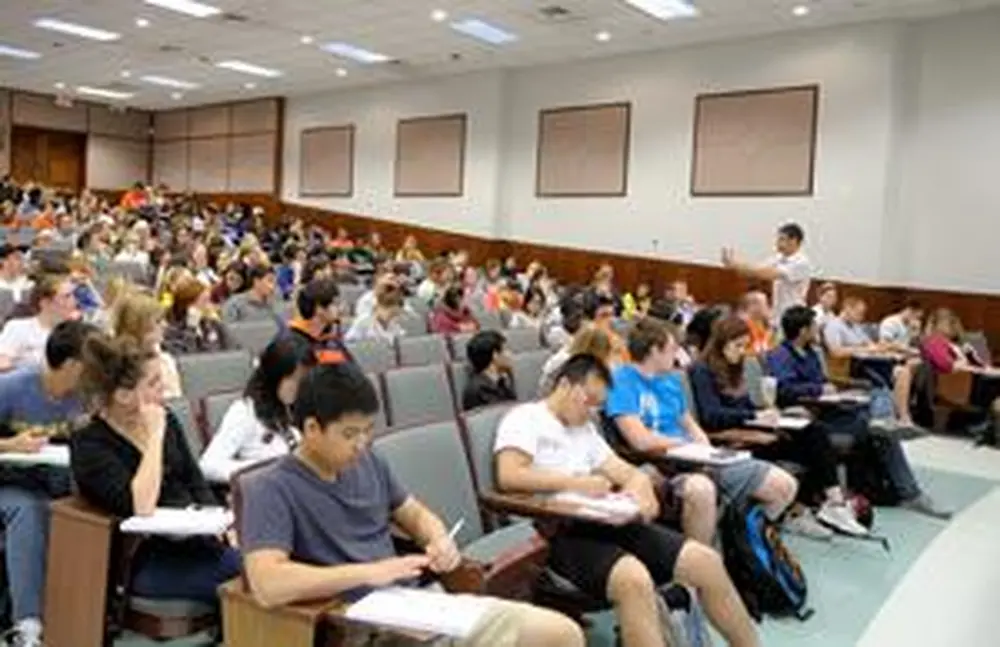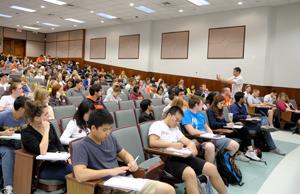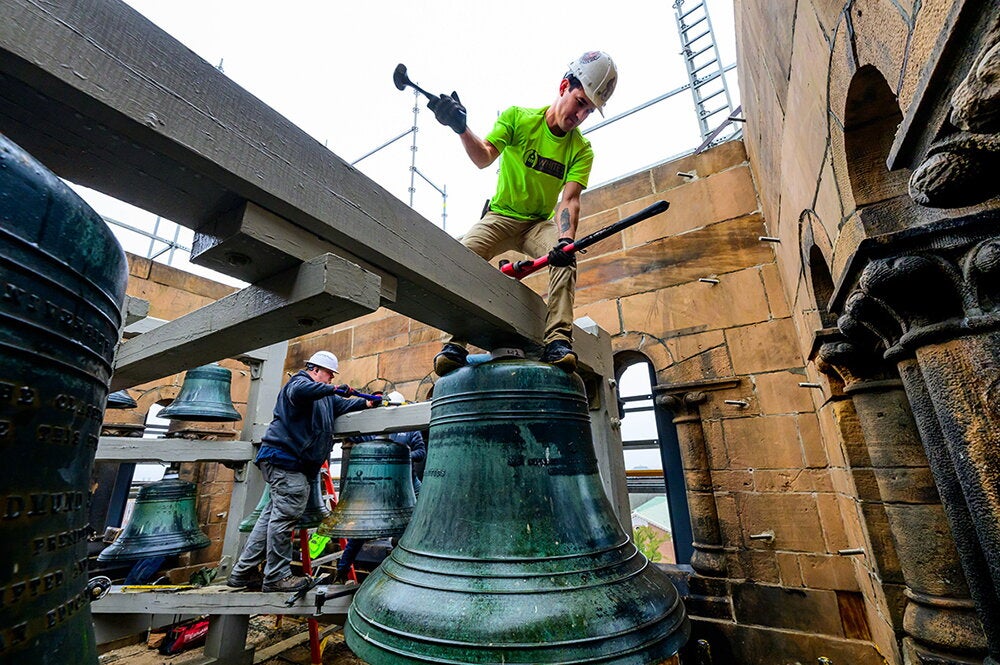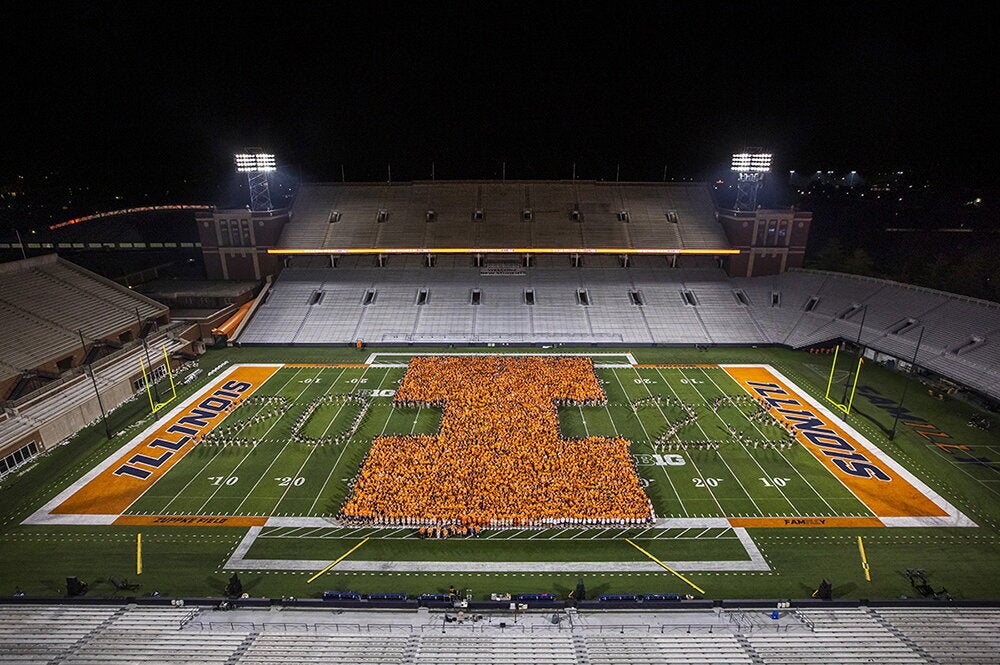

Several departments within the College of Liberal Arts and Sciences are in the final planning stages of a classroom initiative that they believe could reform the way many college courses are taught on campus.
Called the LAS Top Ten Innovation Initiative, the project is focused on bringing more active learning techniques to introductory courses, which impact many first-year students and which research increasingly indicates are vital to their future academic success.
With online education providing more opportunities for students to learn on their own, educators are integrating some of the same principles into large, traditional lecture courses to devote more class time to student-instructor interaction. They hope that doing so will improve students’ critical thinking, communication, and problem-solving skills.
Karen Carney, associate dean in the College of LAS, says the initiative is an important step as departments have been working for a long time to make first-year classes more engaging and interactive.
“Research has shown that students learn best by doing,” she says. “The emphasis of this initiative has been on utilizing class time for students to interact with the professor and one another to maximize the learning outcomes.”
Individual academic departments were invited by LAS Dean Ruth Watkins to propose ideas for the initiative, with the college and campus pledging to provide financial support to help reshape courses that were selected. Seven introductory courses were chosen for the initiative in the Departments of Mathematics, Chemistry, English, Psychology, Statistics, and Communication, and the School of Molecular and Cellular Biology.
The actual changes are still being implemented, but students in the selected courses will generally have access to more resources online in the form of videos, homework sets, and other materials, with more class time devoted to actually discussing and practicing the issue at hand.
For example, the Department of Chemistry has proposed adding online instructional modules that students can work through on their own. The Department of Communication has proposed a “mobile friendly” website where students can view examples of public speaking and exercises that they can practice on their own—and don’t have to sit in a busy computer lab while they do it.
Not all the changes are so tech-centered. In the Department of English, introductory courses in rhetoric will include service learning sections where students volunteer their time at local community organizations in order to add significance and meaning to their written work.
The proposals were put together by a team of faculty within each department. Michel Bellini, professor of cellular and developmental biology, and associate director for undergraduate instruction in the School of Molecular and Cellular Biology, says he and his colleagues plan to move some content online from their foundational course, MCB 150, to free up more time for more meaningful interaction with students during lecture time.
“Research is showing that you retain more and you understand a lot more if you actively participate in what you’re doing,” Bellini says.
At the same time, he adds, it will help instructors and their teaching assistants learn new methods of interactive teaching that he considers to be critical to the field as it becomes more interdisciplinary and collaborative. It’s not necessarily an easy lesson for an instructor to grasp, he adds.
“What we tend to forget is the traditional class format worked for us because we wanted it to happen,” Bellini says. “But some of the students are still trying to figure out if they really like studying molecular cell biology, and if you don’t provide the right way of learning it, you’re going to lose them at the early stage of their college experience. And one of them could be a fantastic researcher and they don’t know it. So I think that the LAS Top Ten Innovation Initiative represents a really important step towards enhancing our MCB curriculum and the overall learning experience of our students.”


